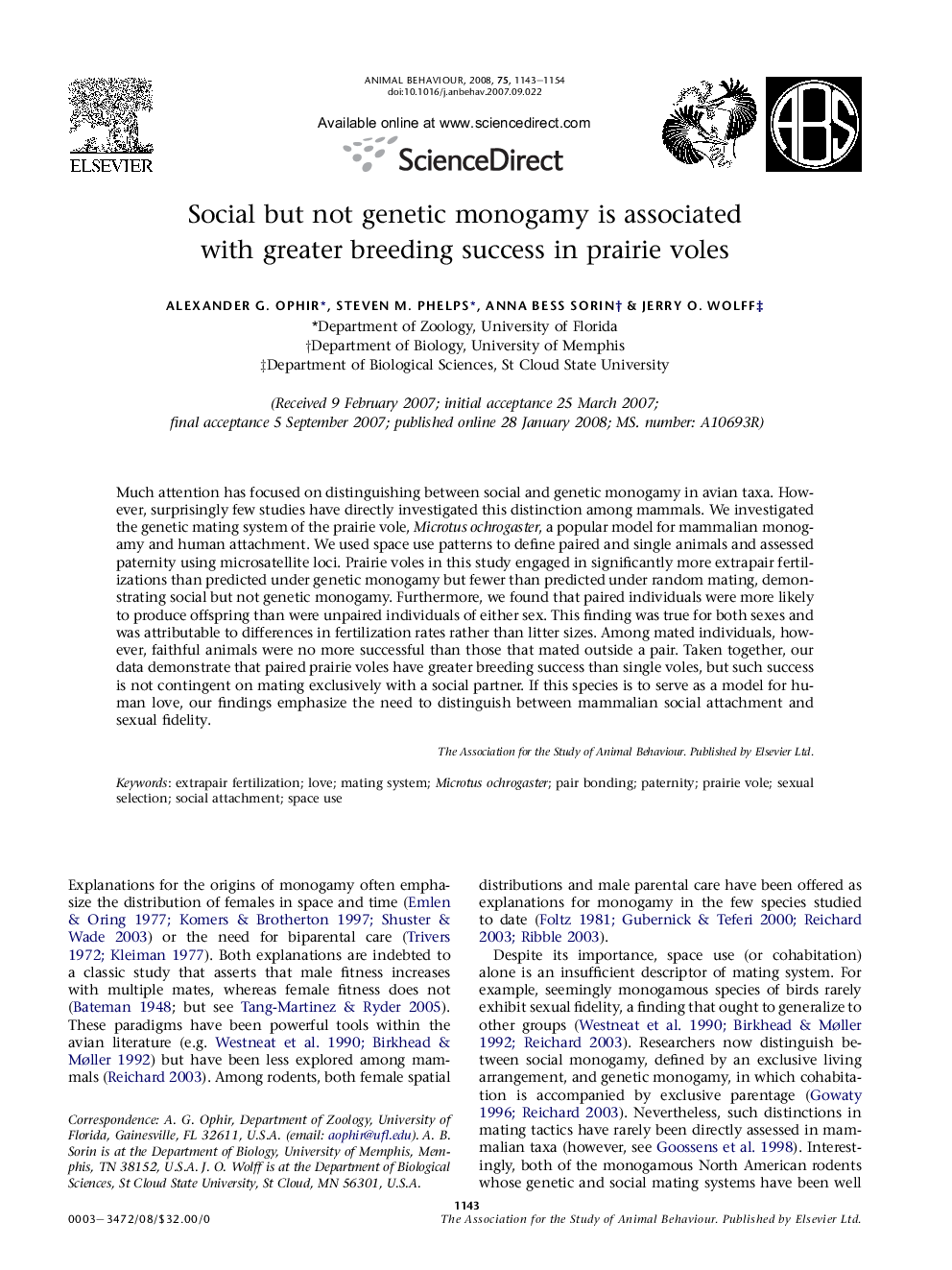| Article ID | Journal | Published Year | Pages | File Type |
|---|---|---|---|---|
| 2418938 | Animal Behaviour | 2008 | 12 Pages |
Much attention has focused on distinguishing between social and genetic monogamy in avian taxa. However, surprisingly few studies have directly investigated this distinction among mammals. We investigated the genetic mating system of the prairie vole, Microtus ochrogaster, a popular model for mammalian monogamy and human attachment. We used space use patterns to define paired and single animals and assessed paternity using microsatellite loci. Prairie voles in this study engaged in significantly more extrapair fertilizations than predicted under genetic monogamy but fewer than predicted under random mating, demonstrating social but not genetic monogamy. Furthermore, we found that paired individuals were more likely to produce offspring than were unpaired individuals of either sex. This finding was true for both sexes and was attributable to differences in fertilization rates rather than litter sizes. Among mated individuals, however, faithful animals were no more successful than those that mated outside a pair. Taken together, our data demonstrate that paired prairie voles have greater breeding success than single voles, but such success is not contingent on mating exclusively with a social partner. If this species is to serve as a model for human love, our findings emphasize the need to distinguish between mammalian social attachment and sexual fidelity.
